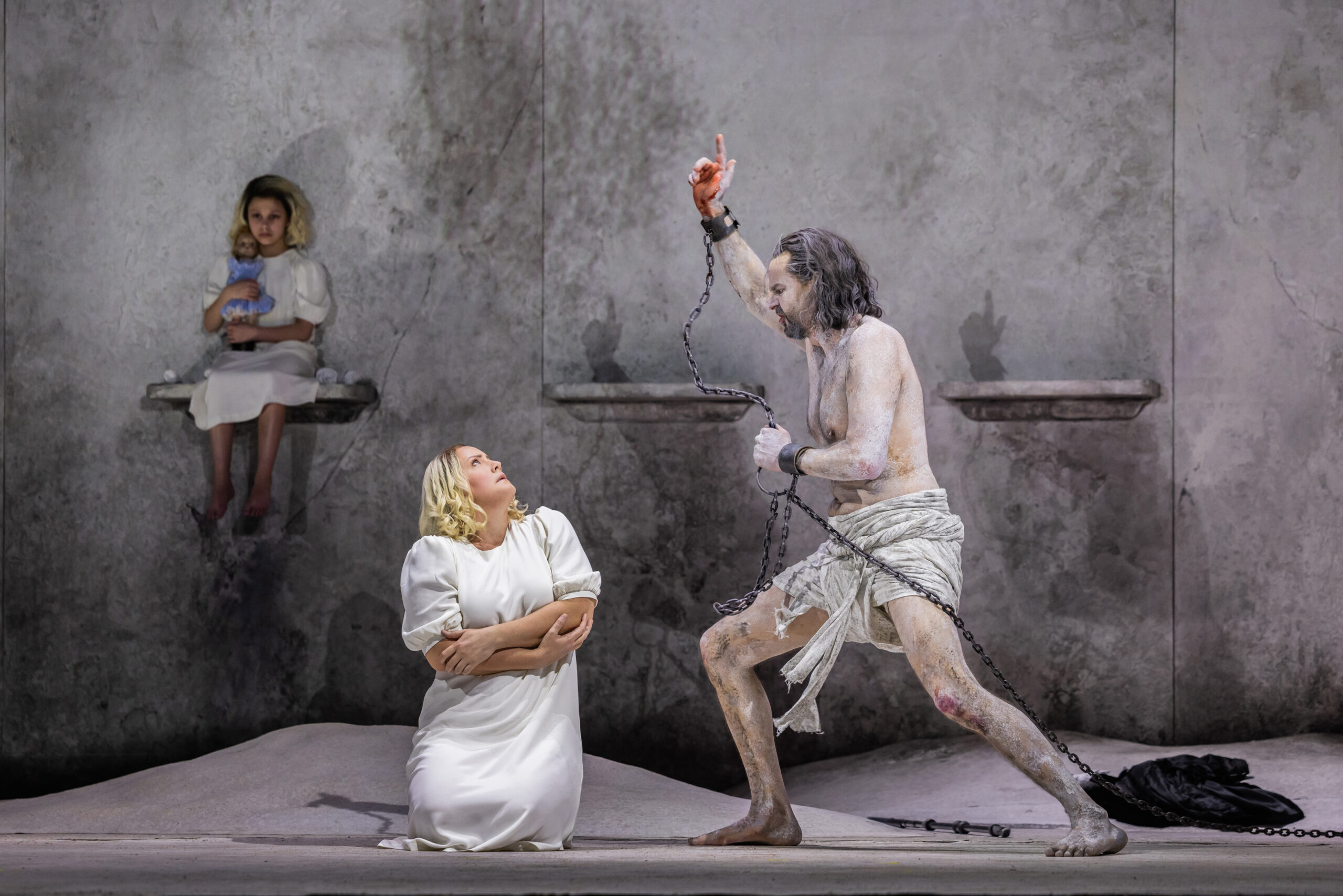In a dark, silent scene, a girl, delicate and still, sits in the half-light, cradling a doll. She wears a black velvet dress, her collar edged in lace, her blond hair softly lit. It’s a picture of innocence — until it isn’t. Her hands, suddenly violent, rip the doll to shreds. The spell is broken. And so is she.
That rupture sets the tone for Claus Guth’s Salome at the Metropolitan Opera — a production less concerned with biblical grandeur than with psychological scars. Long before Strauss’s orchestra begins to speak, the audience is already inside a story about a woman splintered by abuse, shaped by silence, and defined by what she’s been forced to remember.
This is Guth’s first time at the Met, and his vision is unapologetically internal. The setting — not ancient Judea but a late-Victorian world of rigid morality and private horrors — frames Salome not as seductress, but as a survivor unraveling in real time. The central trauma isn’t implied. It’s laid bare: Herod has violated her, over years. Her dance, traditionally staged as flirtation, becomes a harrowing ritual. Six silent figures — her younger selves — emerge like memories made flesh. Each holds a veil. Each removes it. The act becomes a timeline of harm.
Herod, too, is transformed: he isn’t just grotesque, he’s mythic — a half-human, half-beast nightmare who circles Salome as though rehearsing some ancient rite. His presence, always looming, is never truly gone.

The cast moves through a set that seems to breathe with the music. Designer Etienne Pluss builds a world of shadows, where the royal court is all monochrome, and the prophet’s prison — ghostly and white — lies buried beneath it. At one point, the stage lifts like a drawbridge to expose the underworld below. It’s not subtle, but it doesn’t need to be.
What complicates this otherwise clear vision are the symbolic flourishes that never quite land. A recurring scene involving a nude figure and bull-headed men flirts with spectacle more than substance. And moments meant to reflect Salome’s lost innocence — changing shoes, removing her uniform, playing with toys — tread the line between resonant and redundant. They don’t ruin the spell, but they do loosen its grip.
What keeps it taut is the performance at its center. Elza van den Heever sings the title role with ferocity and emotional precision. She doesn’t simply carry the production — she anchors it. On stage for the entire 100 minutes, she charts Salome’s descent with astonishing control. The voice blooms in the quieter moments, then burns white-hot in the opera’s final monologue — a frenzy of grief, obsession, and longing. Under Yannick Nézet-Séguin’s baton, the Met orchestra gives her space and fire, painting a soundscape that pulses with dread and desire.
Peter Mattei’s Jochanaan is a force of calm amid the chaos, his voice resonant even from the shadows. Gerhard Siegel’s Herod is all twitch and teeth — repulsive, unpredictable, compelling. Michelle DeYoung brings sharp edges and cool defiance to Herodias, the only figure who seems to know exactly what kind of world she lives in.
By the time the final scene arrives, the production turns operatic symbolism into myth. Salome topples a towering statue — part monster, part memory — and stands surrounded by her younger selves. The past doesn’t vanish. But for a moment, it stops tearing her apart. Herod’s soldiers may rush to kill her, but she’s already escaped in the only way that matters.
Salome runs at the Metropolitan Opera through May 24. Tickets and information at metopera.org.












